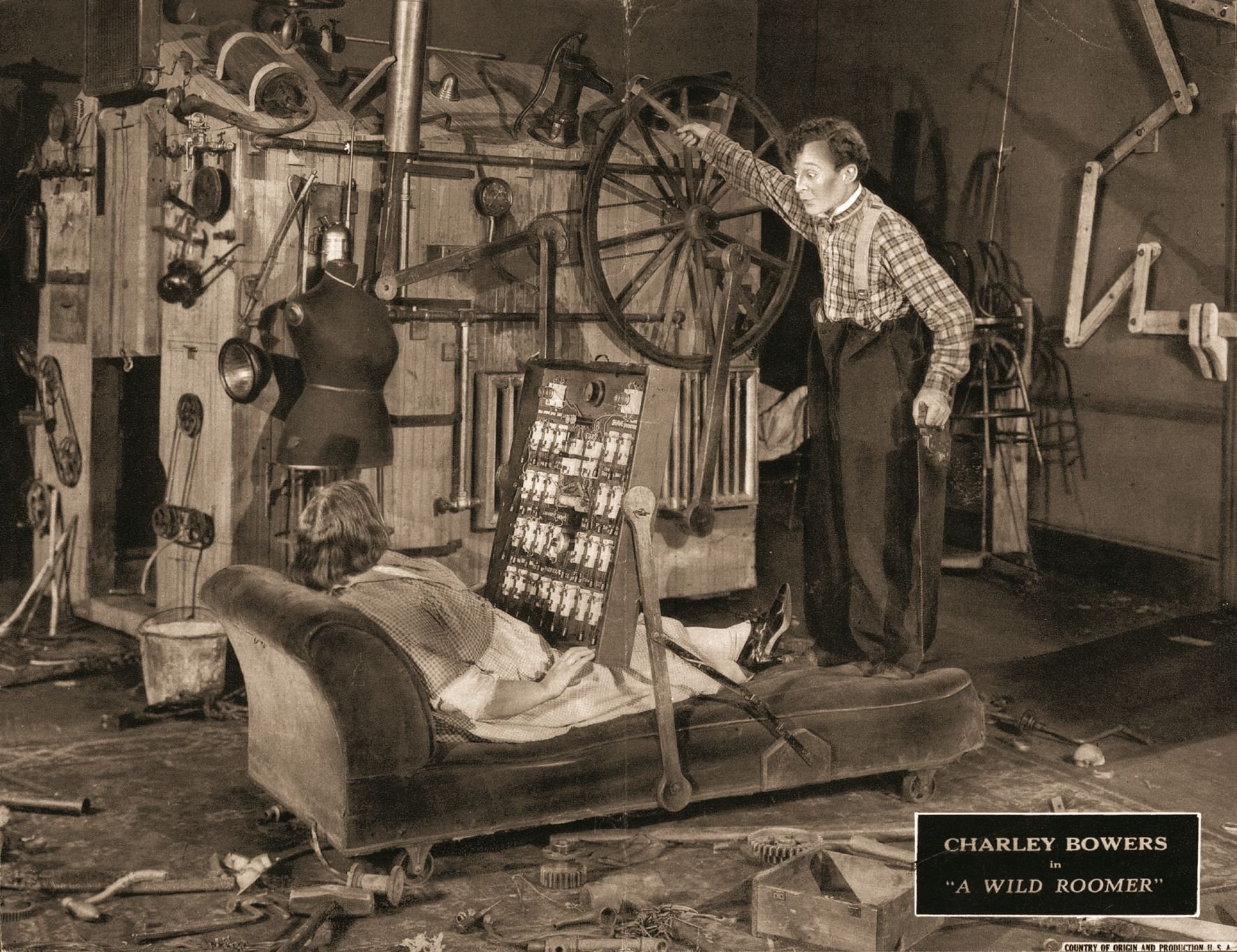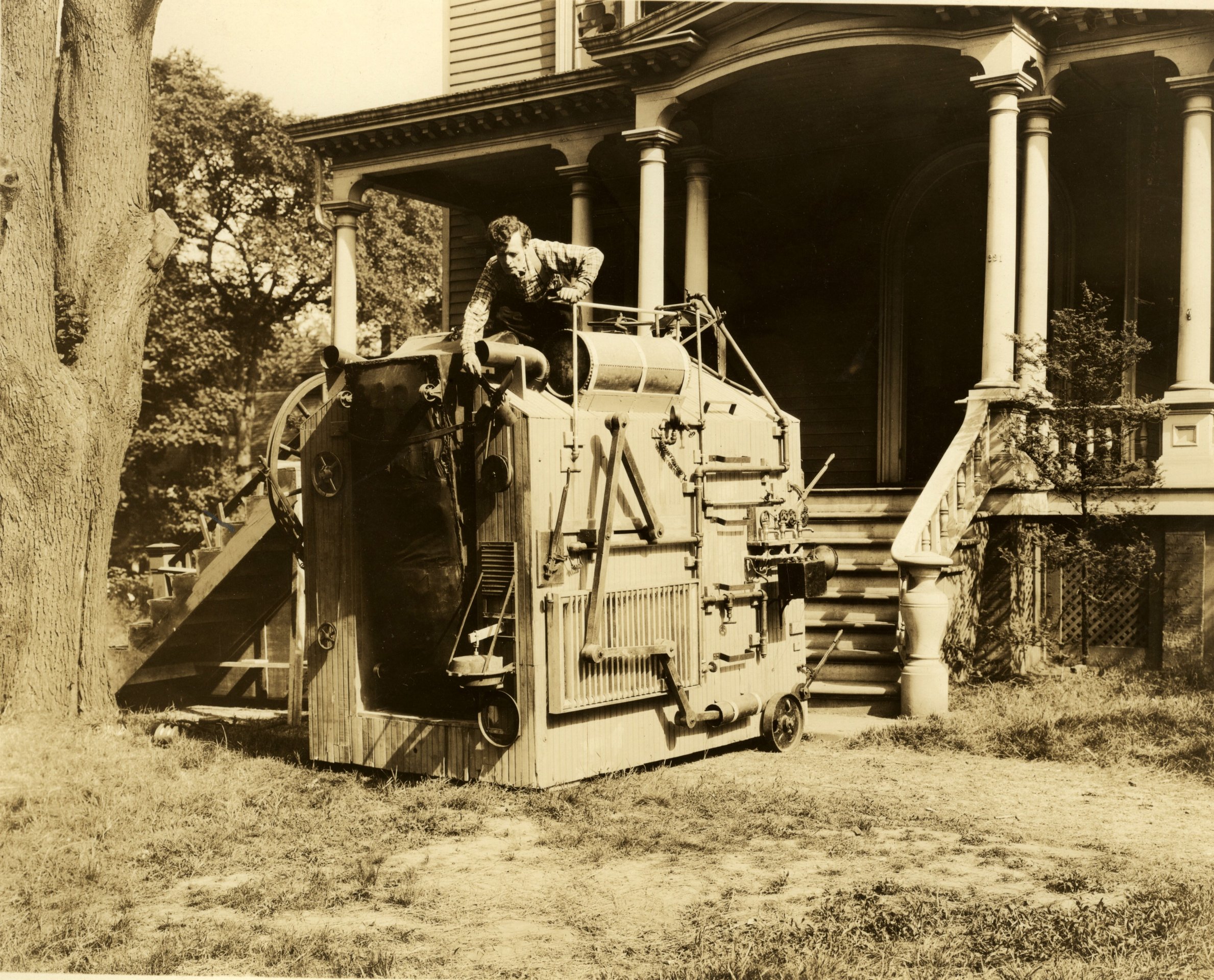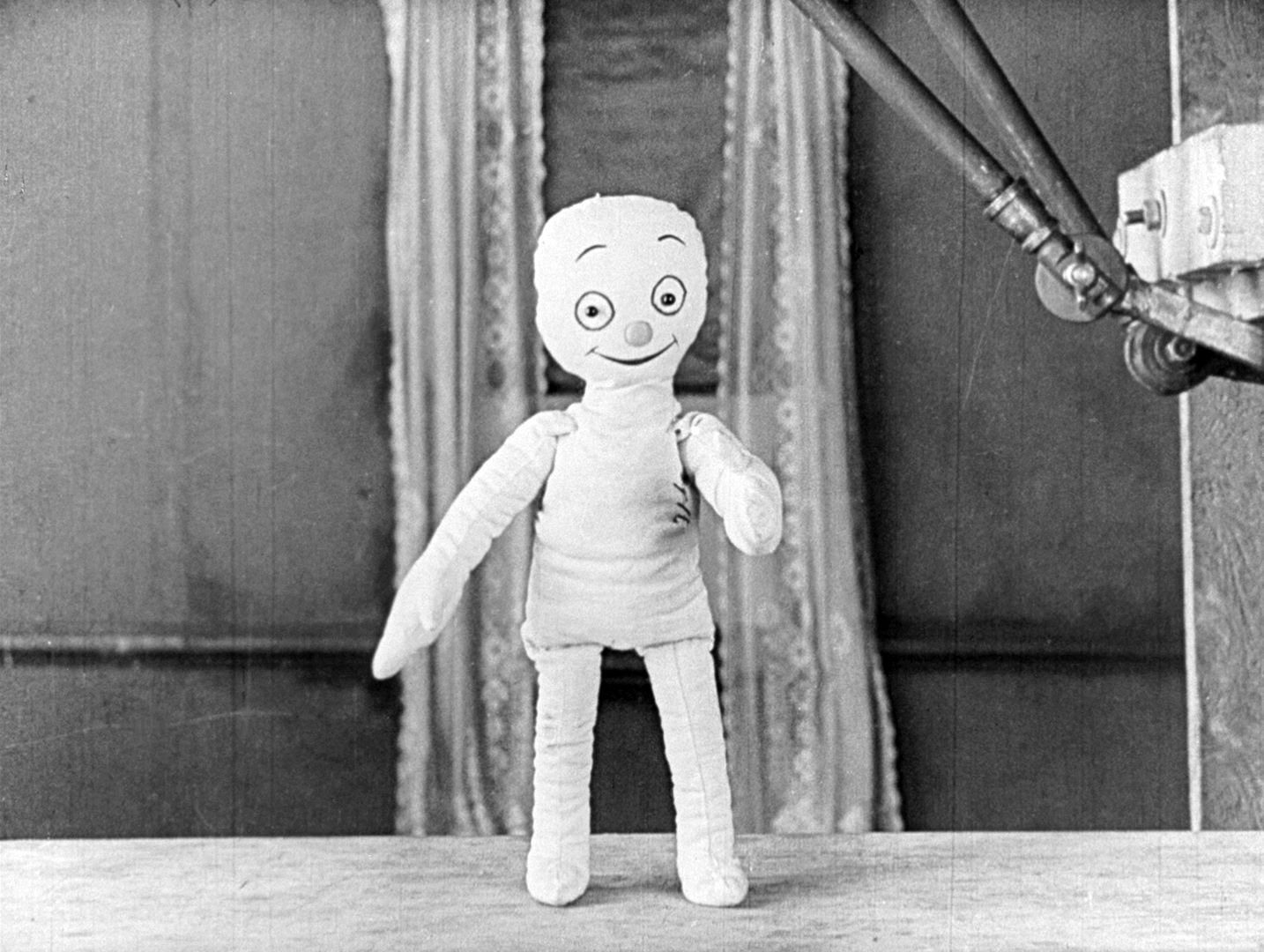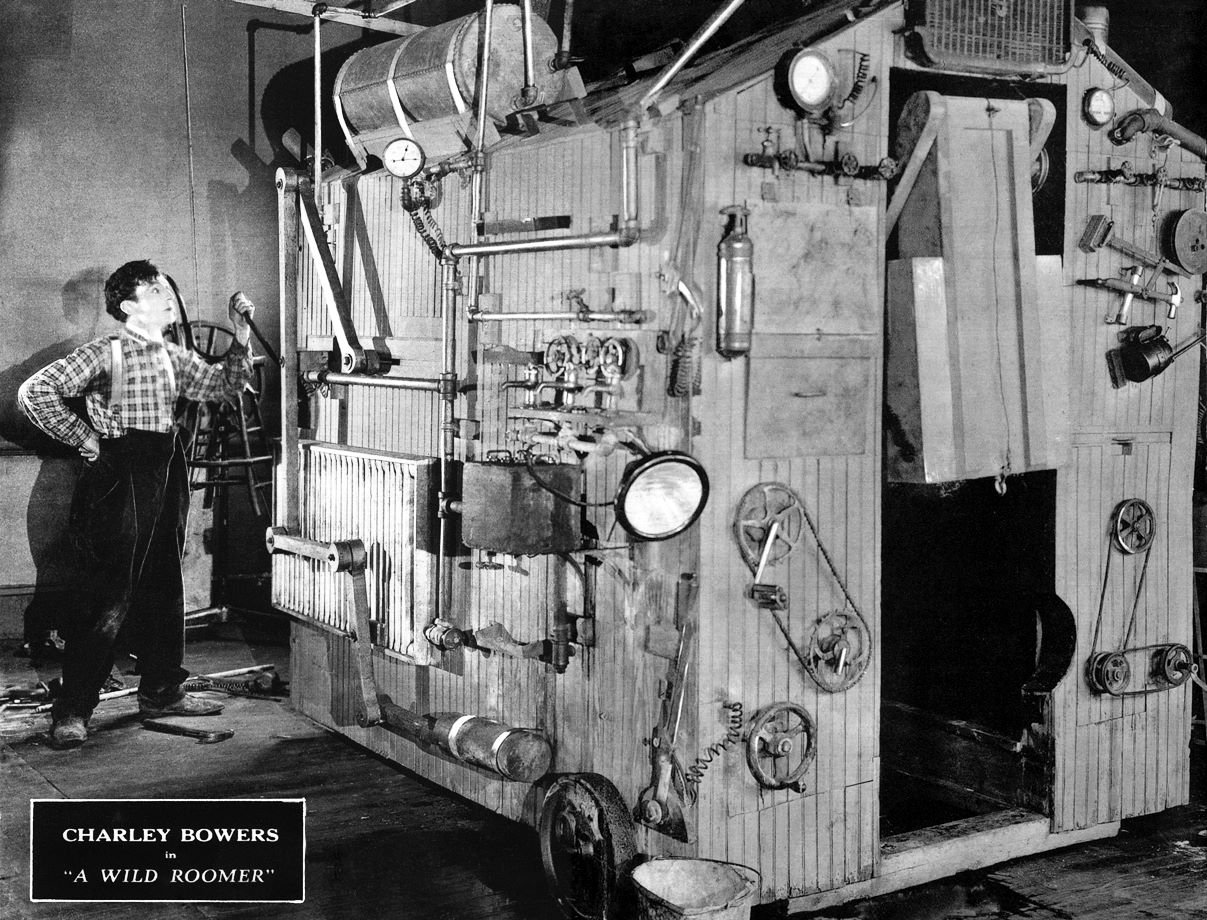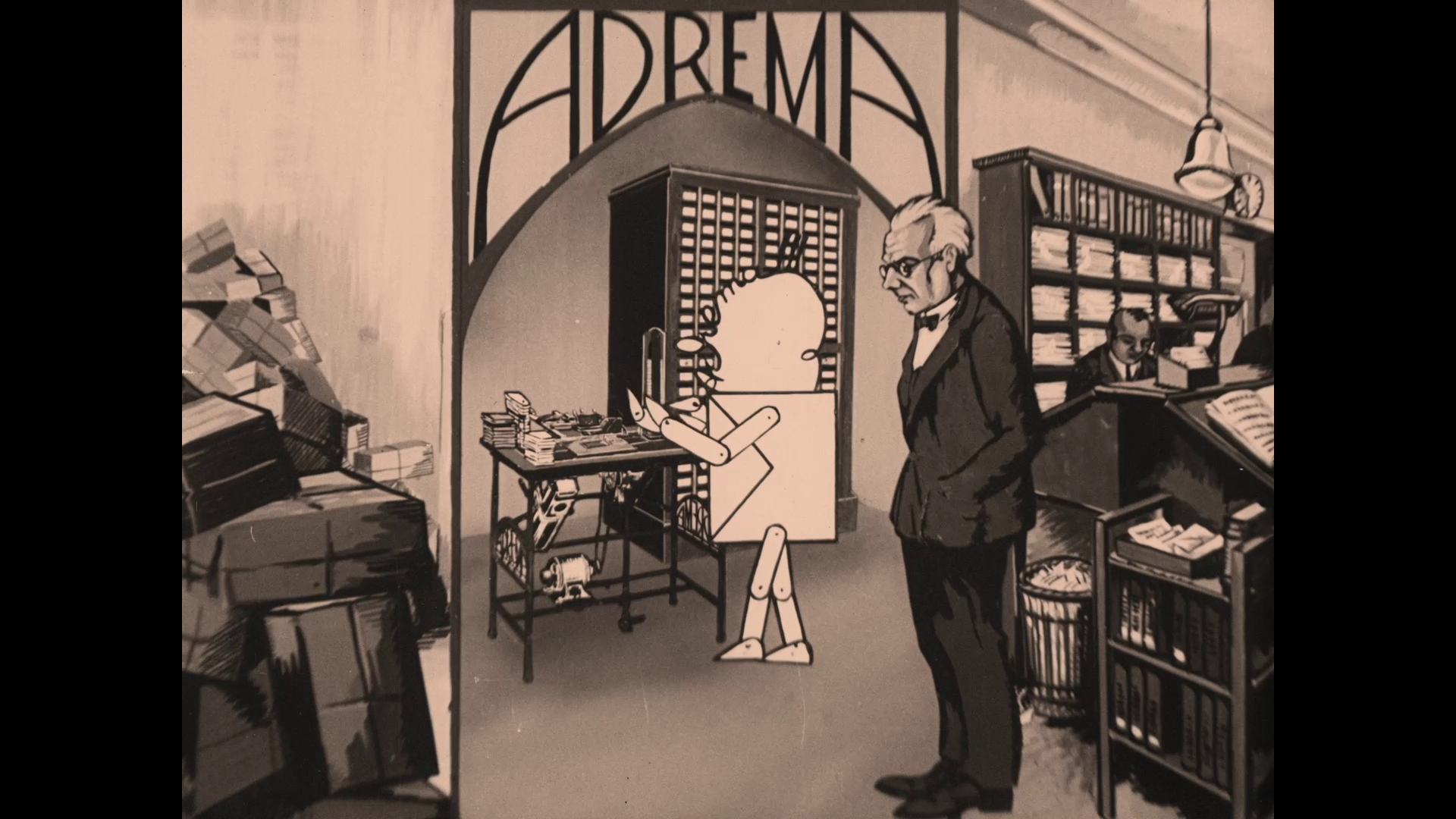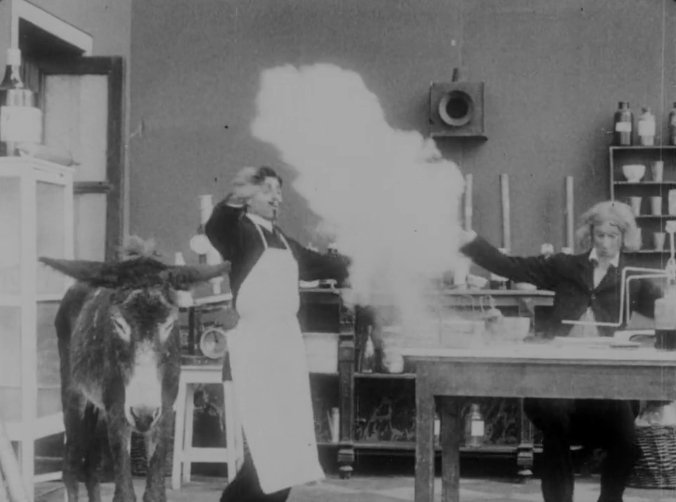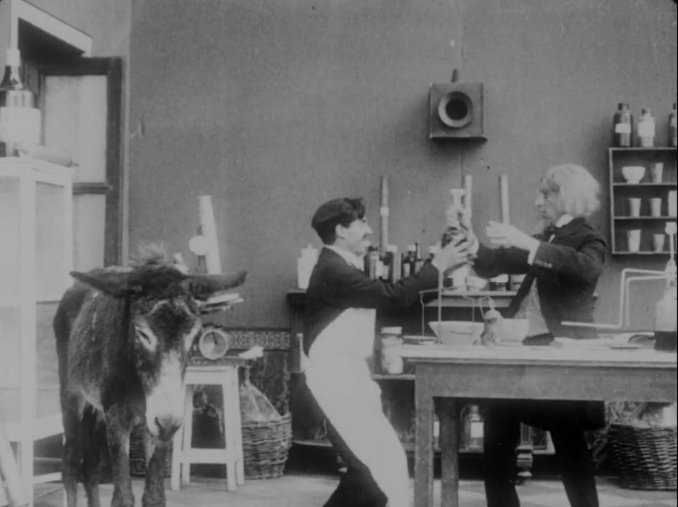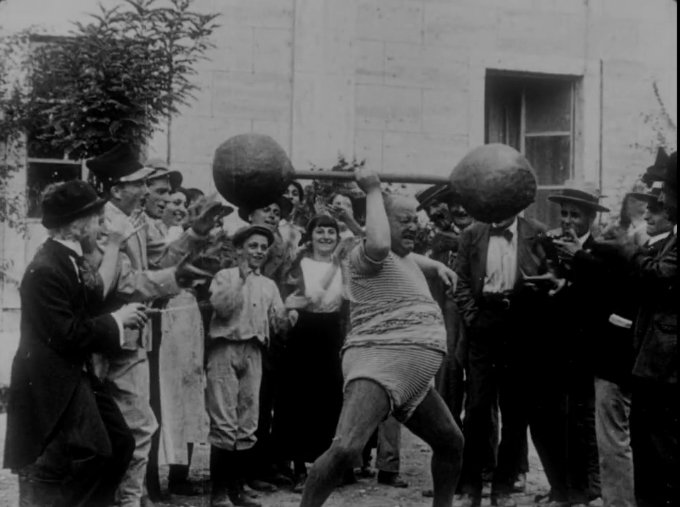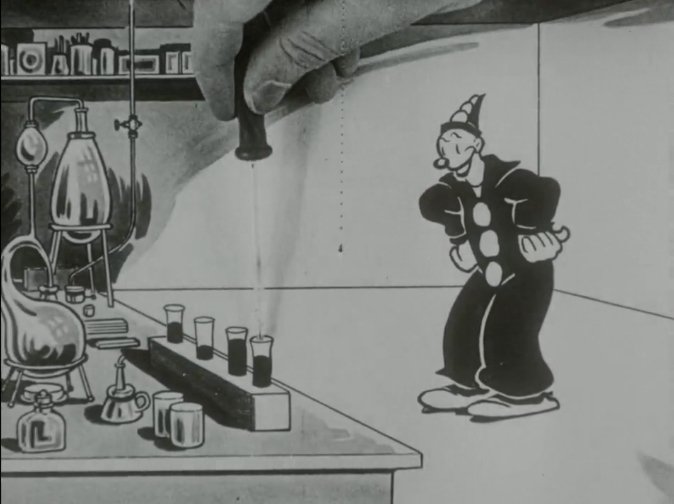Mad Inventors – a collection of short films (I)
Adrema – fast delivery service
(Adrema regelt den Versand)
Germany, 1920s, 6'
DCP, 2K resolution, B&W, tinted
Source: Deutsche Kinemathek
Adrema, a clever little robot, hears a cry for help coming from a parcel dispatch station, where human workers are clearly overwhelmed by their workload. Without hesitation, Adrema rushes to the rescue, solving even the toughest logistical issues by automating and robotizing the processes.
This animated commercial was produced in the second half of the 1920s to promote the addressing technology of the Adrema company, founded in the spring of 1913 by Julius Goldschmidt in the Charlottenburg district of Berlin. Adrema’s solutions found application in post offices, telegraph companies, banks, insurance companies, and major industrial enterprises. Its products and advertisements also reached Warsaw.
The animation style—featuring precise cut-out techniques and painted characters—along with the typography, brings to mind the work of Julius Pinschewer. However, this relationship is not verified in Amsler's definitive filmography of Pinschewer Film AG.
By Elżbieta Wysocka-Koerber
Chemical Ko-Ko
(Chemical Ko-Ko)
USA, 1929, 9'
Director: Dave Fleischer
Producer: Inkwell Studios
DCP, 2K, B&W
Source: EYE Filmmuseum
A scientist working in a lab invents a potion that induces various transformations: changing sizes and colors. Created from ink and brought to life by the potion, Koko the Clown, tries the fluid on animated creatures, including his pal, Fitz the Dog.
The film concludes the famous series of silents titled Out of the Inkwell (1918–1929), a collaborative work of American animation pioneers, the brothers Max and Dave Fleischer. Effectively combining live-action scenes with animation, it utilized a groundbreaking invention for the genre’s development, namely rotoscoping, providing cartoon productions with an unprecedented smoothness. Koko the Clown is the first and most prominent character of the series, all parts of which are linked by the theme of his rebellion against his creator.
By Katarzyna Wajda
Note: The film contains a scene depicting a racist gesture. We have decided to show it due to the artistic and historical value of the work, yet we are aware that it may be perceived as offensive. The depicted gesture does not reflect our views. We ask the audience to view this scene in the context of the whole film and the era in which it was created.
The New Microbe
(Il bacillo della debolezza)
Italy 1912, 6’
Director: unknown
Cast: Lorenzo Soderini, Giuseppe Gambardella
Producer: Società Italiana Cines
DCP, 2K, B&W
Source: EYE Filmmuseum
The New Microbe shows that mad inventors need not be scary. The main character of the film is a professor who creates a potion that has the power to take away physical strength. He leaves his laboratory and spreads chaos – not to seize power or commit crime, but for the sheer joy of mischief-making.
This Italian comedy also introduces an interesting historical context, depicting the use of animals in medicine. Here, the professor prepares his potion through experiments conducted on a donkey.
A copy of the film was made based on the restored nitrate film found in the Desmet collection.
By Marta Stańczyk
Police in the Year 2000
(La police en l'an 2000)
France 1910, 5'
Director: unknown
Cast: Marcel Fabre, Eugene Breon, Clement Mégé
Producer: Gaumont
DCP (SD), B&W
Source: EYE Filmmuseum
Before the collective imagination became dominated by superheroes, Gaumont sent police officers to roam the skies. The main characters in the film are a group of law enforcers, typical of slapstick comedies. However, the film shows how their work would look in the new millennium: flying a blimp over the city, granting them the perfect vantage point, and catching criminals with a special grabbing device. Thanks to this, all sorts of thieves and scoundrels are put behind bars.
This futuristic comedy presents an optimistic view of future technology, but decades later, well beyond 2000, it may evoke associations with surveillance tools that ensure security while also serving as a means of control.
By Marta Stańczyk
A Wild Roomer
(A Wild Roomer)
USA 1926, 26’
Director: Charles R. Bowers, Harold L. Muller
Screenplay: Charles R. Bowers, Harold L. Muller, Ted Sears
Cast: Charles R. Bowers
Producer: Bowers Comedy Corporation
DCP, 2K, B&W
Source: FPA France
Charley, an aspiring inventor whose bold ideas tend to inconvenience other residents of his boardinghouse, faces a life-changing moment when his grandfather leaves him his entire fortune. However, there is one condition: within 48 hours, Charley must convincingly demonstrate to his family the operation of a machine, plans of which he has been showing to his late grandfather. Otherwise, everything will go to the protagonist’s uncle.
A crazy slapstick comedy, brimming with gags and tricks, featuring elements of animation. An original work by Charles R. Bowers, once forgotten for decades, and recently rediscovered as a versatile filmmaker and cartoonist, the film combines a fascination with technology with lyrical surrealism. It is a cinematic testimony of the creator’s extraordinary imagination and the technological possibilities of cinema at the time.
By Katarzyna Wajda
The films will be accompanied by live music Ola Bilińska + Ola Rzepka
SATURDAY | SEPTEMBER 20 | 11:00 | SALA STOLICA
introduction: educator


